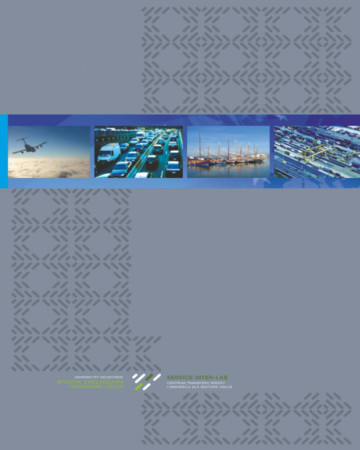
ISSN: 1644-275X
eISSN: 2353-3005
OAI
DOI: 10.18276/ptl.2016.34-19


Issue archive /
nr 2 (34) 2016
Assessment of utilization of regions’ transport capacity by the DEA method of determining relative efficiency
| Authors: |
Bogusz
Wiśnicki
Maritime University of Szczecin, Transport Engineering and Economics Faculty Jarosław Duda Maritime University of Szczecin, Marine Engineering Faculty |
| Keywords: | transport system efficiency transport modelling DEA model |
| Data publikacji całości: | 2016 |
| Page range: | 11 (197-207) |
| Klasyfikacja JEL: | R15 R40 |
Abstract
The paper presents a method of comparison of geographical regions in terms of their transport system efficiency. The method is an alternative to traditional statistical analyses which compare parameters describing the transport capacity and transport performance. It utilizes the opportunities presented by the DEA (Data Envelopment Analysis) in terms of computation of relative technological efficiency. The proposed model provides for quantitative and qualitative verification of particular components of transport systems in the compared geographical regions, and determination of the efficiency frontier. Effectiveness of the method is presented, based on a comparative analysis of Poland’s administrative provinces. An overview of the opportunities provided by the DEA method is outlined together with some methodological recommendations. The conclusions discuss conditions for broader applications of the analysed study method.
Download file
Article file
Bibliography
| 1. | Charnes, A., Cooper, W.W., Rhodes, E.L. (1978). Measuring the Efficiency of Decision Making Units. European Journal of Operational Research, 2, 429–444. DOI 10.1016/0377-2217(78)90138-8. |
| 2. | Coelli, T.J., Prasada Rao, D.S., O’Donnell, C.J., Battese, G.E. (2005). An Introduction to Efficiency and Productivity Analysis. Second edition. New York: Springer. 312 (323) |
| 3. | Domagała, A. (2007). Metoda Data Envelopment Analysis jako narzędzie badania względnej efektywności technicznej. Badania Operacyjne i Decyzje, 3–4. |
| 4. | Link, H. (2015). Road and Rail Infrastructure Costs. In: Ch. Nash (ed.), Handbook of Research Methods and Applications in Transport Economics and Policy (pp. 9–37). Northampton (USA): Edgar Edward Publishing. |
| 5. | Masternak-Janus, A. (2013). Analiza efektywności gospodarowania przedsiębiorstw przemysłowych w Polsce. Economics and Management, 4, 111–126. DOI: 10.12846/j.em.2013.04.08. |
| 6. | Merkert, R., Hensher, D.A. (2011). The Impact of Strategic Management and Fleet Planning on Airline Efficiency – a Random Effects to Bit Model Based on DEA Efficiency Scores. Transportation Research Part A: Policy and Practice, 45 (7), 686–695. DOI: 10.1016/j.tra.2011.04.015. |
| 7. | Milewski, D., Wiśnicki, B. (2015). Modelowanie systemów transportu intermodalnego – kierunki badań naukowych.XVI konferencja naukowa „Modelowanie Procesów i Systemów Logistycznych”, 4 grudnia. Sopot: Wydział Ekonomiczny Uniwersytetu Gdańskiego. |
| 8. | Pachura, P., Nitkiewicz, T. (2008). Ocena efektywności wybranych komponentów kapitału intelektualnego regionów przy zastosowaniu metody Data Envelopment Analysis. Organizacja i Zarządzanie, 1, 21–38. |
| 9. | Smith, A., Wheat, P., Wolanski, M. (2015). Public Transport Operations Costs. In: Ch. Nash (ed.), Handbook of Research Methods and Applications in Transport Economics and Policy (pp. 38–70). Northampton (USA): Edgar Edward Publishing. |
| 10. | Wiśnicki, B., Dyrda, A. (2016). Analysis of the Intermodal Transport Efficiency in the Central and Eastern Europe. Naše More – International Journal of Maritime Science & Technology, 63 (2), 43–47. DOI:10.17818/NM/2016/2.1. |
| 11. | Wiśnicki, B., Milewski, D. (2014). Analysis of the Market Potential for Transport Using the Longer and Heavier Vehicles in Poland. Logistyka, 6, 13923–13928. |